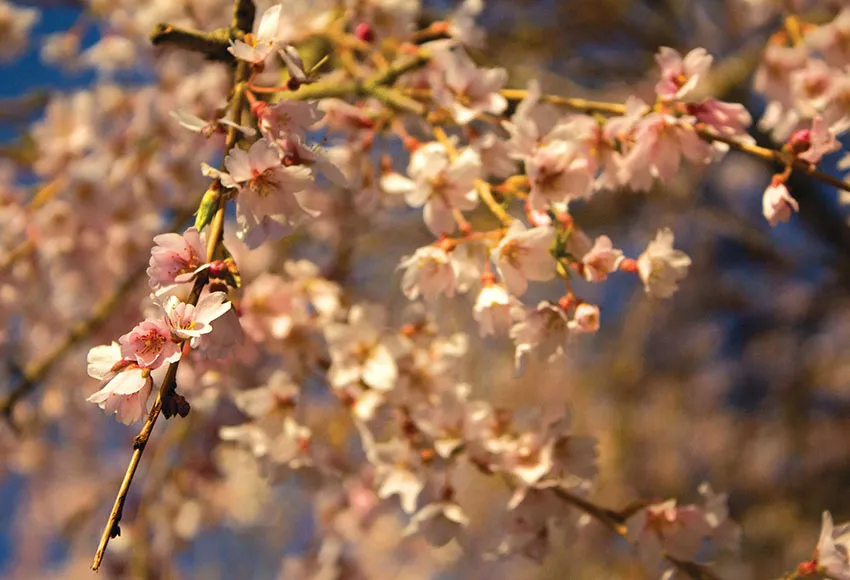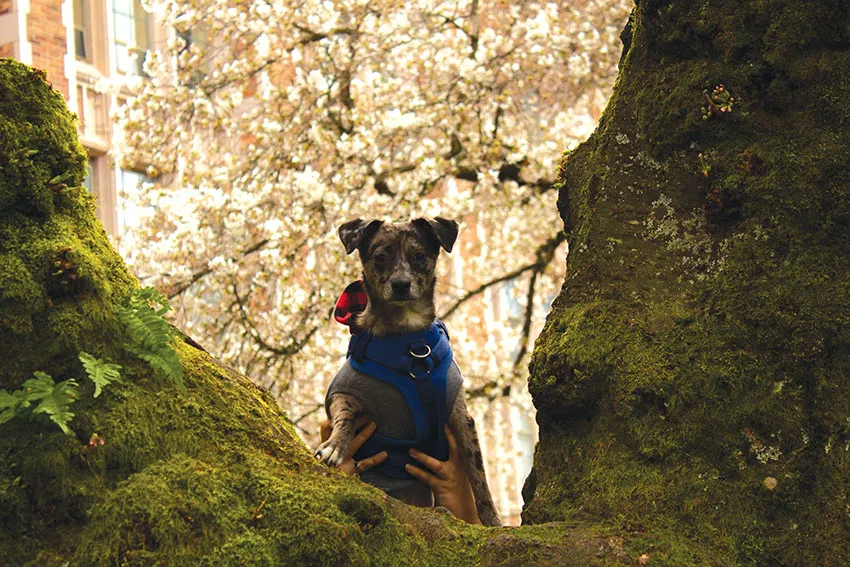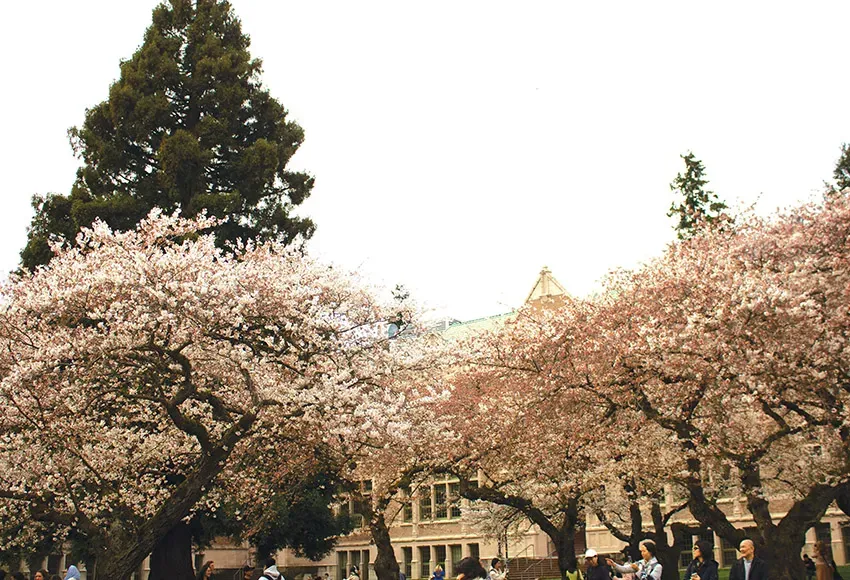As far as the eye can see, blooms stretch out in a swirling sea of pink and white hues – the annual Cherry Blossom Festival is here! From March 24 to April 10, the University of Washington welcomes visitors from all over the world to walk around its beautiful quad and take in the gorgeous sights – and smells – of one of the state's largest collections of cherry blossoms.
A very pink history
The festival coincides with the National Cherry Blossom Festival, held in Washington, DC, each spring since 1934. The tradition started as a symbol of friendship between the United States and Japan. In 1910, 2,000 cherry blossom trees, to be planted along the Potomac, arrived in Seattle by boat before they were shipped to the other Washington via train.
Shortly thereafter, the US Department of Agriculture discovered insects and diseases in the trees and recommended torching the whole collection! This led to great controversy and nearly a diplomatic crisis. Ultimately, a few of the trees were spared, but then another shipment of over 3,000 trees was sent from Japan in 1912.
Cherry blossoms are typically short-lived plants. On average, they only last between 15 and 20 years. However, the trees featured at the University of Washington are known as Yoshino. These have been around for 90 years and typically flower quickly when the weather warms. This variety was deemed perfect for our often-unpredictable spring, as they can still bloom when it's cold – it just takes a little longer.
Today, cherry blossoms are revered all over the world as a symbol of spring and rebirth. They are so sacred that, in Washington DC, it is considered vandalism of federal property to break a branch off one of the nation's collections. Those who dare snip a bloom could face harsh fines or even arrest.

Cherry blossoms come to Seattle
Despite their names, cherry blossom trees do not typically produce fruit. The tasty summertime treat comes instead from cherry trees, which bear fruit between May and July, though not until their fourth year of life. While it is unlikely that visitors to the UW will find fresh fruits growing on the trees, the petals of cherry blossoms are edible. They are used in traditional Japanese sweet teas and desserts. Sneaky blossom pickers won't face severe penalties at the UW, either.
Twenty-four years after the first cherry blossom trees arrived in DC, Washington state got its own collection. Japan's prime minister, Takeo Miki, donated the trees in 1936. They were planted at the Washington Park Arboretum. In 1964, to make way for the opening of State Route 520, the university arranged to transplant the trees to its quad.
The trees have become so beloved that some Washington state residents decided to clone them in 2005. Using trimmings from the 90-year-old trees, botanists from the Skagit Valley have begun growing new saplings on the lawn outside Parrington Hall.
The trees have become a staple of the UW community, so much so that the university started a Twitter page for them! Now, the trees can speak for themselves, which they do almost daily at @uwcherryblossom.

Look out for the Japanese Cultural Festival
The University of Washington isn't the only location in the city hosting a cherry blossom Festival this spring. The Seattle Center is also hosting the Cherry Blossom & Japanese Cultural Festival April 14-16 at the Armory Food & Event Hall and the Fisher Pavilion between 11 a.m. and 5 p.m.
The celebration will focus on Japanese culture and the relationship between the people of the Pacific Northwest and Japan. Some of the events being featured include martial arts, ikebana (flower arranging), the tea ceremony, dressing in kimonos, koto music, and taiko drumming.
Whether bloom lovers attend the cultural festival at Seattle Center or just stroll through the beautiful gardens at the University of Washington, those flowers are sure to put a smile on the faces of everyone who sees them. You can't help but feel hopeful when you take in the sweet smell of fresh cherry blossoms!


